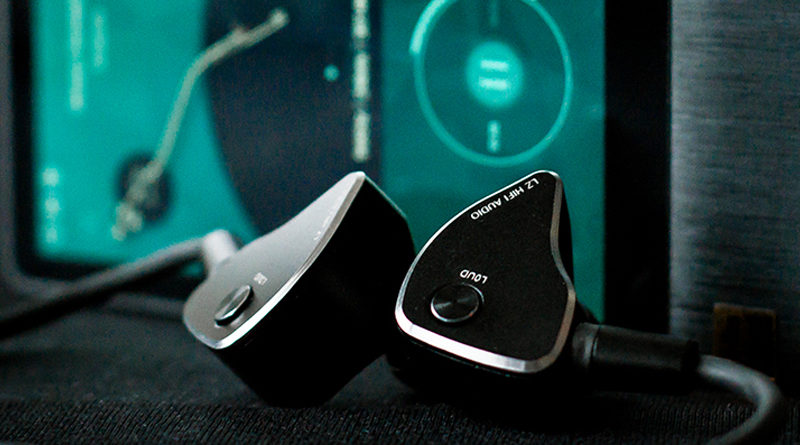LZ HIFI A6 — hybrid IEMs with advanced technology and wide tuning options
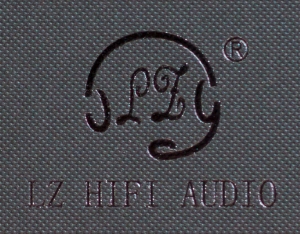

Short after release of very capable and bright A5 IEMs, young but ambitious LZ HIFI Audio brand presented their new products — A6 and A6Mini targeting totally different budgets. New models share the same 7 layer piezo-electric ceramic extra-high frequency driver along with 10mm dynamic woofer. A6 goes beyond that and offers the additional two mid range BA + two treble BA units and mechanical LOUD switch to change bass and treble impact at lower volumes. We’ve got a chance to test both models, starting with A6 as the most advanced one. And yes, we’d surely compare its sound to the previous A5 IEMs but only if we would survive during very complicated and time consuming test of highly sophisticated A6 IEMs.

Just to remind about LZ HIFI Audio — it is a small company located in ShenZhen, China. Domestic LZ brand popularity came with the release of LZ-02 IEMs that gathered further positive feedback and demand from the western part of the world. Currently, LZ HIFI Audio protfolio consists of 6 products and LZ A6 & A6Mini are their latest models.
You can purchase LZ HIFI A6 at PenonAudio store

LZ HIFI A6 technical specifications:
- Combination of drivers: 6-way hybrid
- Dynamic: 10mm DLC diaphragm dynamic woofer
- Piezo-electric: 7 layer parallel piezoelectric ceramic extra-high frequency driver
- Balanced armature: midrange BA x 2, treble BA x 2
- Frequency response range: 10Hz-40kHz (at max, depending of nozzle group)
- Nominal Impedance: 45Ω LOUD OFF, 20Ω LOUD ON
- Sensitivity: 110dB LOUD OFF, 115dB LOUD ON
- Cable: 1.3m, 3.5mm single-ended stereo plug, L-shaped
- IEMs connector: MMCX or 2Pin 0.78mm (depending of customer choice)
- Designed according to CTIA IECQ standard
- Feautres: Gain (LOUD) switch, 9 pairs of sound tuning nozzles
Output nozzles (filters):
Group A: frequency response 10Hz-40kHz
- Blue: 3-7kHz +3dB
- Black: 3-7kHz ±0dB
- Red: 3-7kHz -3dB
Group B: frequency response 15Hz-30kHz
- Gold: 3-7kHz +3dB
- Dark gray: 3-7kHz ±0dB
- Pink: 3-7kHz -3dB
Group C: frequency response 20Hz-20kHz
- Dark Blue: 3-7kHz +3dB
- Sliver: 3-7kHz ±0dB
- Purple: 3-7kHz -3dB
We’ve made our own nozzle visual chart to get a better and quick understanding of different nozzels and their influence. We have also rearranged the colors so that it would represent frequency range and upper mids|lower treble descrease going from left to right:

As stated in the technical specifications and as seen on this graph — nozzles are split into 3 different groups and having 3 subsequent tuning option. A group represents specific frequency response range determined by the change of inner nozzle diameter. Each nozzle option inside the group has different acoustic filter mesh. Switching from +3dB of group A to -3dB of group C should produce quite a change in the frequency response and tonality. Let’s get back to that after examining the exteriors.
Build quality, design and materials:
Seems that LZ HIFI Audio brand has changed the approach towards packaging design all around. Unlike the previous model, A6 IEMs box has the additional black outer cover with shiny purple brand logo, model name and short description imprints. Back side contains company name and address.

Cover aside, box is orange now and has only brand logo printed on it.
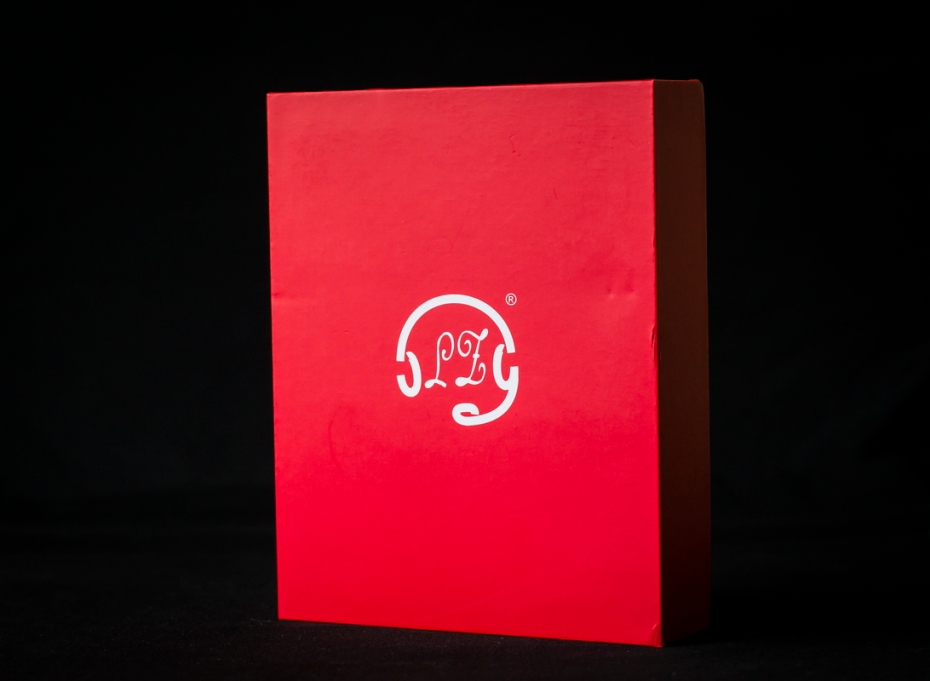
Box inner compartment is split into two layers with top insert holding IEMs and bottom compartment containing storage case along with several accessory boxes.

Box contents:
- A6 IEMs
- cable with 3.5mm jack protection cover
- 9 pairs of tuning nozzles
- 6 pairs of silicone eartips
- 1 pair of memory foam eartips
- storage case
- warranty card
- user manual
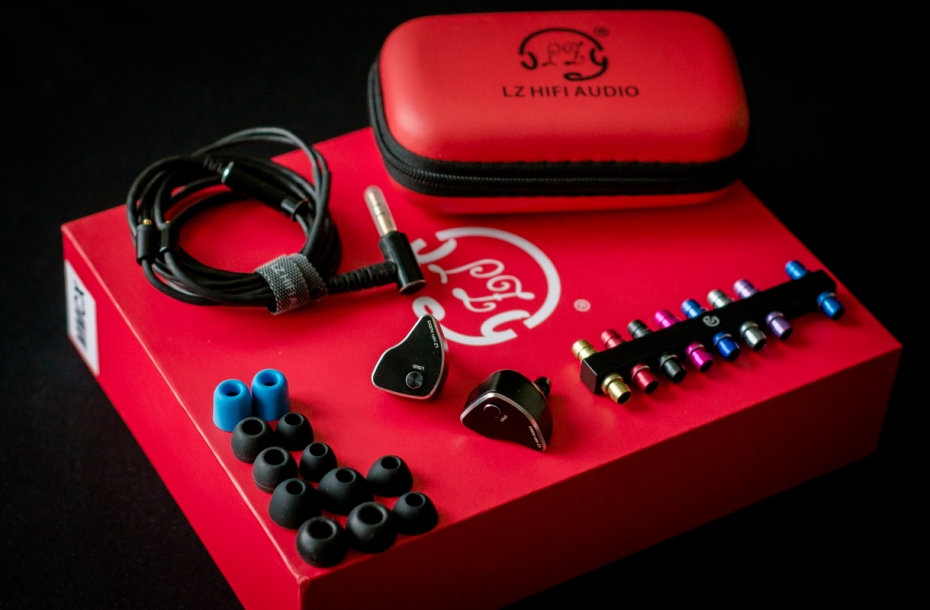
Pretty standard list of accessories if not taking into consideration 9 pairs of output nozzles. This set has expanded in comparison to A5 tuning options that had only 4 nozzles to choose from. Storage case is always welcome to provide long lasting life for your IEMs.

A6 IEMs are made of two parts — top aluminum cover and base (perhaps — steel). Parts are perfectly aligned, the gap is hardly visible. Top covers are matt black with rough finish, contain neatly printed brand name and LOUD button label.

LOUD button is also located here, closer to the back side of the shells. It is made of aluminum, doesn’t rattle and has pretty large travel: protruding ~0,5mm from surface when pressed and ~2-2.5mm when depressed.

IEMs bases are black with glossy finish and have a single compensation opening close to the nozzles.

Nozzles are made of aluminum, have threaded type of connection and rubber seal to protect dust and moisture from coming inside. A6 nozzels are interchangeable with A5 IEMs — same thread diameter and pitch.

MMCX (or 2-pin, 0.78mm) are located at the top edge. No free play here.

Stock cable can have either MMCX or 2-pin, 0,78mm connectors depending of customer choice. All cable elements are made of aluminum — Y-splitter, limiter, connector housings and L-shaped 3.5mm jack housing.

Connectors do feature channels indicators but there are no corresponding indicators on IEMs. Anyway, further identification is an easy task due to specific IEMs shape and fit. We like A5 cable more for two reasons: soft braid and earguides that would hold any given shape. A6 cable is packed in more stiff silicone braid while the earguides are springy.

In terms of fit comfort we’d prefer A5 over the newer A6 model. The shape of the latter is not so natural, A6 weights more and are kind of thick. Finally, we could get used to that and find the best position but it would be much easier if the earguides would be helping better by holding the desired curvature. Consequently, the level of noise isolation is kind of average if not less. Better ergonomics of the previous model cuts off the incoming noise more effectively.
Sound quality:
Tested with Hidizs AP200 + AP80 DAPs and Group A Red nozzle, LOUD ON.

Lows and midbass:
Deep bass shows high amount of textures no matter which nozzle is currently in use but at the same time is highly dependent of the LOUD button position. It feels more enveloping and significantly expands the soundstage with LOUD ON while being more dry and narrow with LOUD OFF. This effect is further pronounced when changing from Group A to Group C nozzles. Bass amount and presence are not overwhelming, neither it is accentuated. Сontouring is precise, good layering allows to distinguish different instruments performing in this range. Subbass reaches good depth whereas bass is more than adequate to balance and accompany other ranges. One peculiar thing is that lows here remind us of full-sized open back headphones with more airy and transparent presentation, especially with Group A nozzles. Group C, Purple nozzle would show more compact and tight bass, narrowing the soundstage and reminding of closed back headphones sound.
Midbass section is adequately articulated, full-bodied and powerful. Drum sections sound very natural and engaging, creating a good feel of overall dynamics. There are no audible coloration produced by excessive treble extensions or significant change while using different nozzles which means that this range is perfectly weighted and tuned by crossovers.

Mids and vocals:
Mids are more upfront than lows and take the leading role on the stage. Unlike the previous model, A6 male and female vocals are kept almost at the same level and sound similarly close to a listener. Resolution is more than the average with large amount of micro details on both — voices and instruments. Together with excellent layering it made possible to distinguish some instruments in our favorite tracks and find them more perceptible than we thought they were. There is no excessive harshness on upper mids, but the overall tonality feels very bright and sound is prone to sibilances with Group A nozzles. This group adds the colder crispness to string instrument or female vocals and producing a bit thin sound in overall. LOUD ON would bring back the thickness, resulting in wider spread and more body to each instrument or voice but with no further change in the tonality. Switching to group C, -3dB would change the perception by cutting off most of the sparkles and giving the mids a touch of warmth. Sibilances are much better controlled or at least should not draw much of attention. Going back and forth with different filters give obvious influence to the overall tonality. Very good chances to find the most suitable sound thanks to a plenty of options. One more thing: A6 are the first IEMs to show that extensive drive and articulation of string finger pulls which are more common for midbass rather than mids… All in all, mids are musically rendered and can vary from very emotional and thin to thicker, more accurate and natural.

Treble:
LZ A6 sets the new standard concerning treble range extension, speed and resolution. Extension is significantly expanded which makes us believe that additional piezo-electric driver used in this model contributes much to reach such exceptional result. The amount of micro details is overwhelming leaving most of the IEMs that we have tested before far behind and creating the feel of immense transparency. Even A5 treble feels a bit simplified when directly compared to A6 during our A|B tests. Group A Blue filter is excessively bright and crisp, highly accentuates treble and bringing it to the very front while Group C filters remove anything too biting, not reducing high resolution and equilizing treble to mids. In fact, Group B is actually very close to A5 treble presenation but the impact of going from -3dB to +3dB is more evident. Plus you have three more options to decrease its gain and extension. This range can vary from icy, sparkling and very crisp to more neutral, softer and less emphasized behavior. LOUD was always ON during our treble tests to reveal the full potential. LOUD OFF kind of conjests this range making it less extensive and coherent.
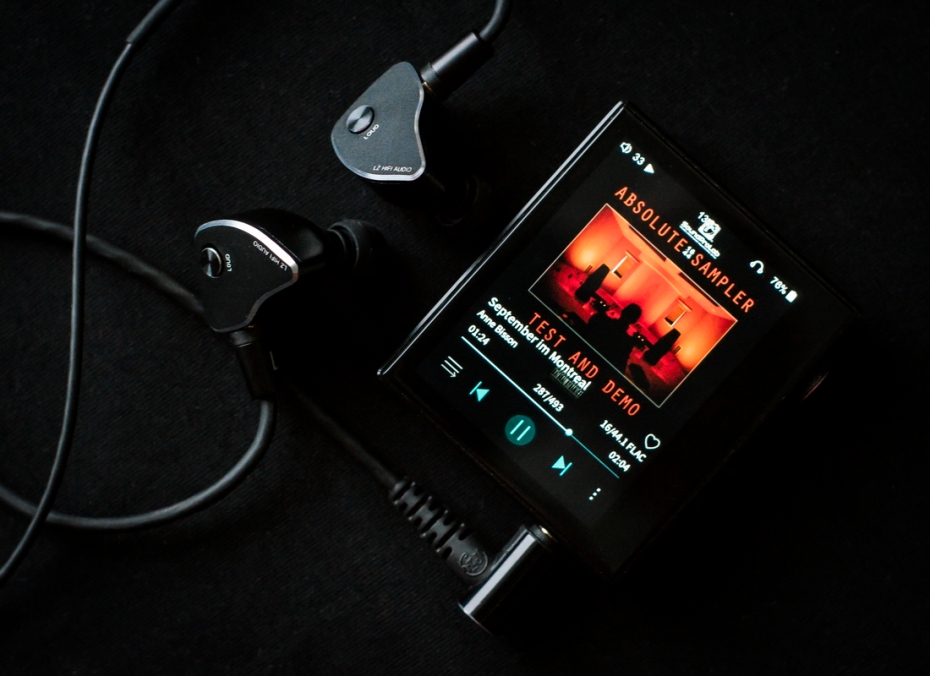
Soundstage:
Soundstage width greatly depends of the LOUD switch. The widest stage is perceived with LOUD ON — it gives more than average spread of instruments on horizontal and vertical planes in which bass and mids create the depth and treble helps to define vertical domain. Distance of certain instruments from the center in regular tracks is more than the average as well while special binaural recordings are very pleasing to listen to due to significantly enlarged spread and precise positioning.

LOUD button:
Button presses result in immediate change in sound. You can have one channel with LOUD activated and the opposite one without. Not sure whether such possibility is safe for the source but we haven’t damaged anything up to this moment. User manual doesn’t state anything about that. The best and safest way would be to switch LOUD ON|OFF before connecting IEMs to a source. Another reason for doing it this way is the excessive force that should to be applied to push the button. Not the best feeling while wearing IEMs.
LOUD actually works as GAIN (amplification of a signal) and could have been called this way to remove some misunderstanding.

Our personal perception is that LOUD can stay ON forever and LOUD OFF is the option that vast majority would leave aside. Or wise-versa… Why wise-versa? Because the manual states that LOUD is ON when button is depressed but we think that this is a mistake and should be other way around — sound gets amplified when button is pressed. Therefore, if the impedance goes down (LOUD ON) the volume rises. Anyway, maybe, technically, LOUD changes impedance, frequency response, sensitivity… but perception-wise it gains mostly in lows and little bit in treble while making the soundstage wider and more satisfactory to our ears. Our testing DAP — Hidizs AP200 has 130mW output power which is enough to drive either 40Ω or 20Ω loads to the appropriate levels but we feel that LOUD OFF is producing kind of underpowered and narrow sound to our personal liking.
One more thing to mention is that the background noise at mid to lower volumes gets more apparent with LOUD position at ON. Of course, gets barely noticeable at higher volume levels.
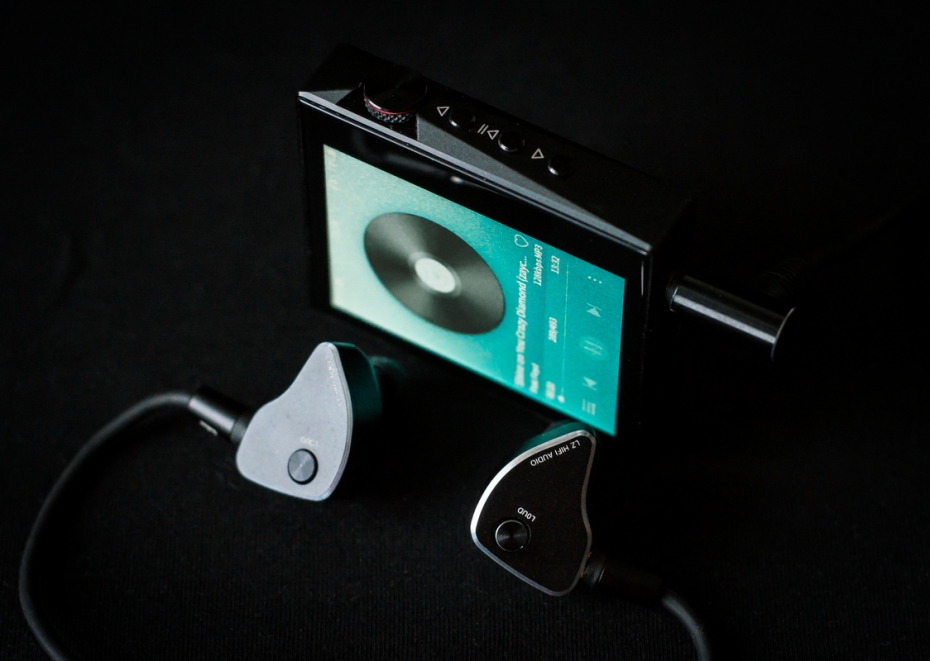
Sound in overall:
LZ A6 sound is very hard to describe by a single phrase. Its sound characterisitcs and tonality change with different nozzle options and LOUD position. Lets say that sound can vary from only slighty accented on upper mids/lower treble to very sharp and bright. High resolution, great texturing of lows, perfect layering and exceptional treble extension would remain constant regardless of that choice. The planes of treble are also changing from very upfront to a bit laid back.
Compared to LZ A5:

LZ A5 IEMs are more evidently U-shaped even when compared to Group A A6 filter set. A5 lows are more pronouced, less contoured and less textured while treble is at the same level but not catching up with the extension and micro details of A6. With Group B filters applied to A6 we can get very close to A5 sound tonality and overall presentation but A6 would still be better balanced IEMs due to less impact on lows. Group C would force A6 to sound significantly less sparkling (or more neutral) than A5. On the other hand, A5 has much better fit, almost as exceptional treble extension (and much more extended compared to many other IEMs), more pronounced bass and lower price. If only you can get the same filter set for A5 (which we think might be sold separately by PenonAudio) — this option would be quite competing with its own advantages and variety of additional tuning options. Bassheads might also vote for A5 for its obviously elevated lower range.

Conclusion:
LZ HIFI A6 IEMs are great perfomers concerning the combination of its decent sound quality, technological advance and the variety of further tuning options. Buying a pair is kind of securing audio fan from an improper purchase — there would always be a possibility to tune the sound to own liking, changing from bright and crisp to more balanced, closer to neutral tonality. Other sound characteristics like treble clarity and extension, bass texturing, instrument separation or overall resolution are either setting the new standards or having very adequate performance, at least. Definitely the new benchmark for various aspects in our collection and one to consider while searching for remarkable sound quality.
You can purchase LZ HIFI A6 at PenonAudio store

